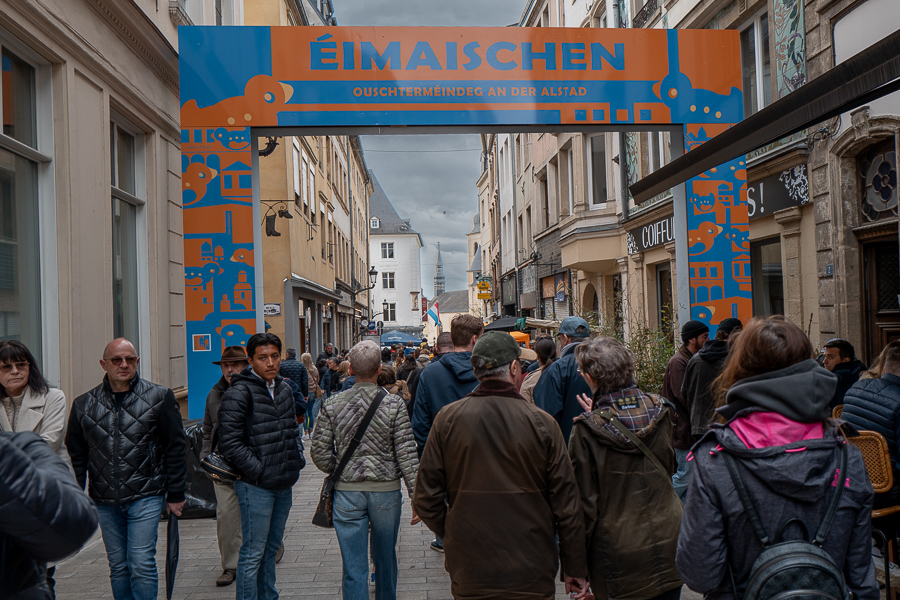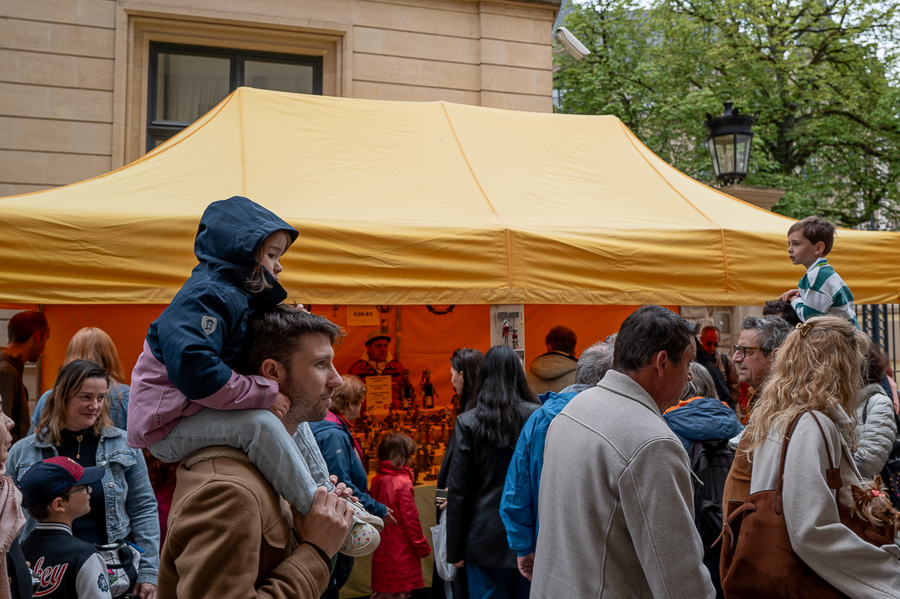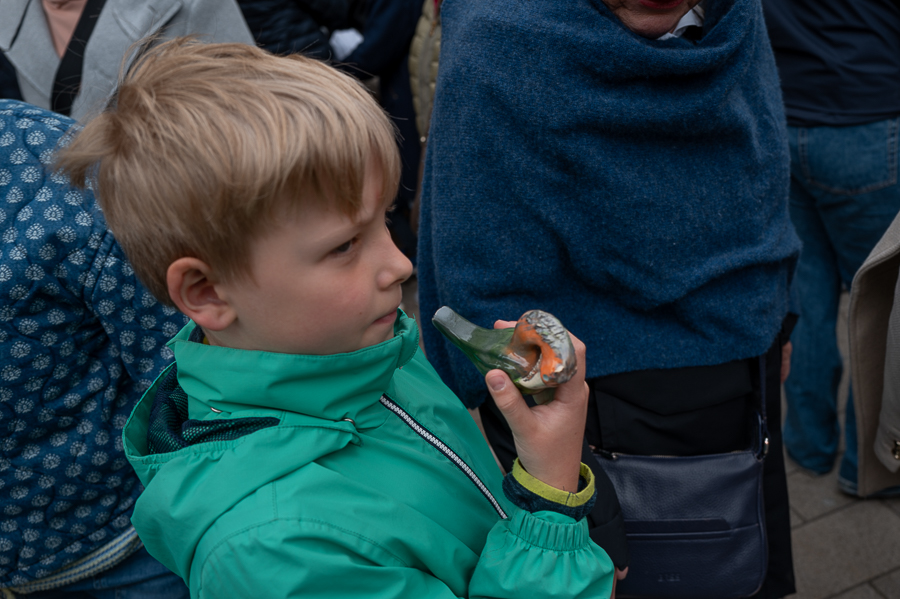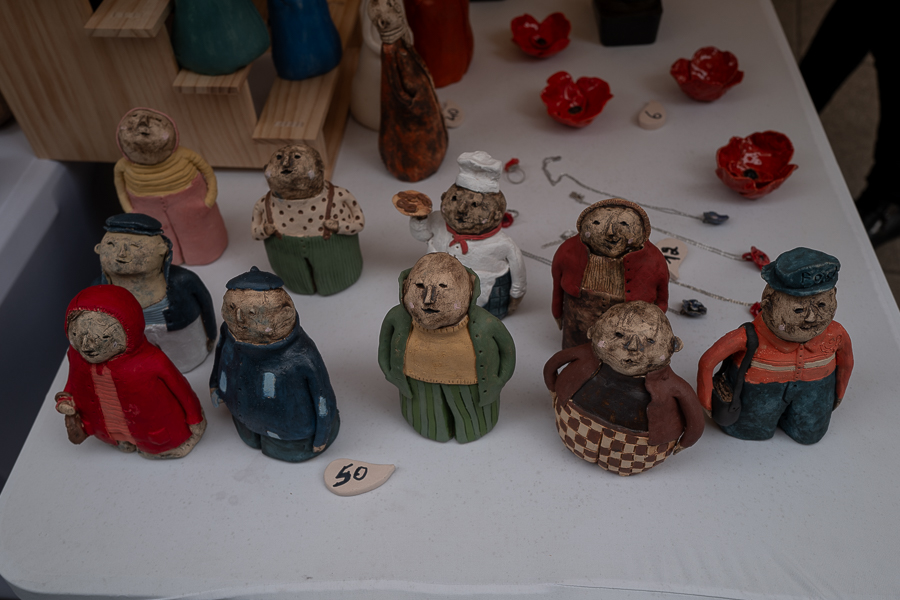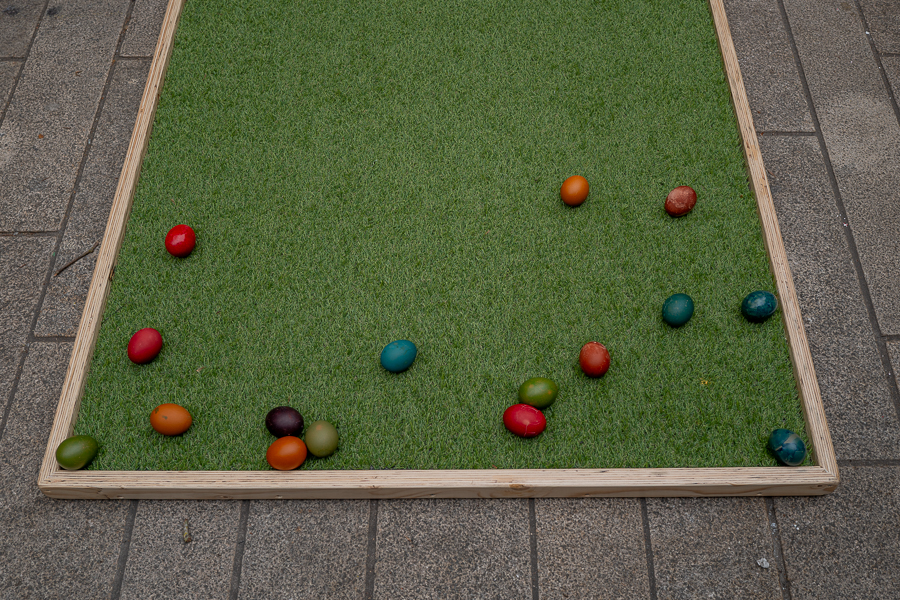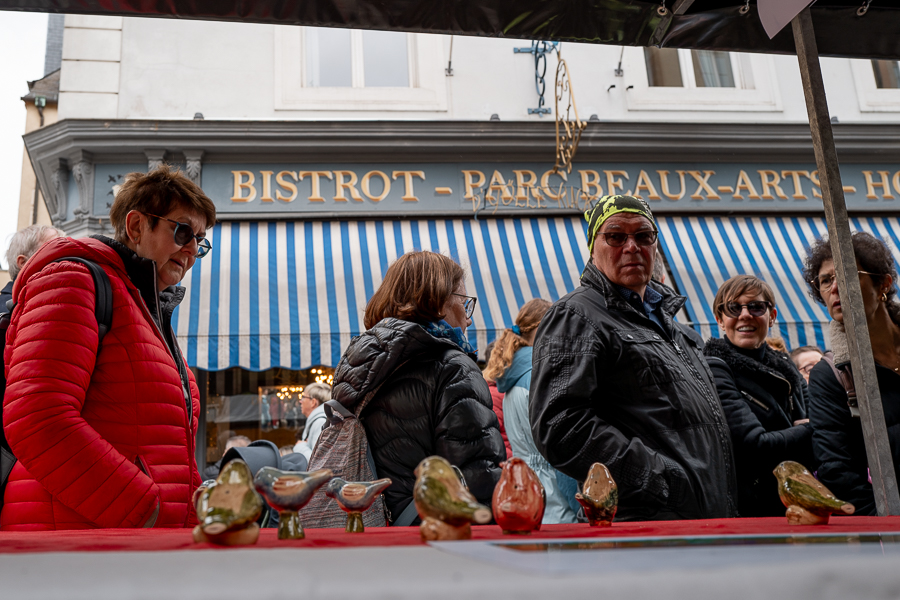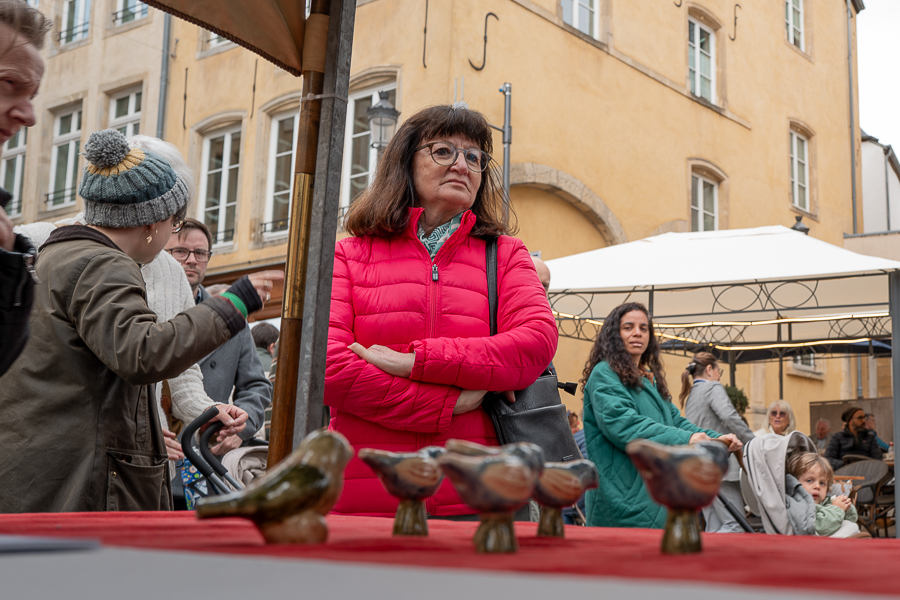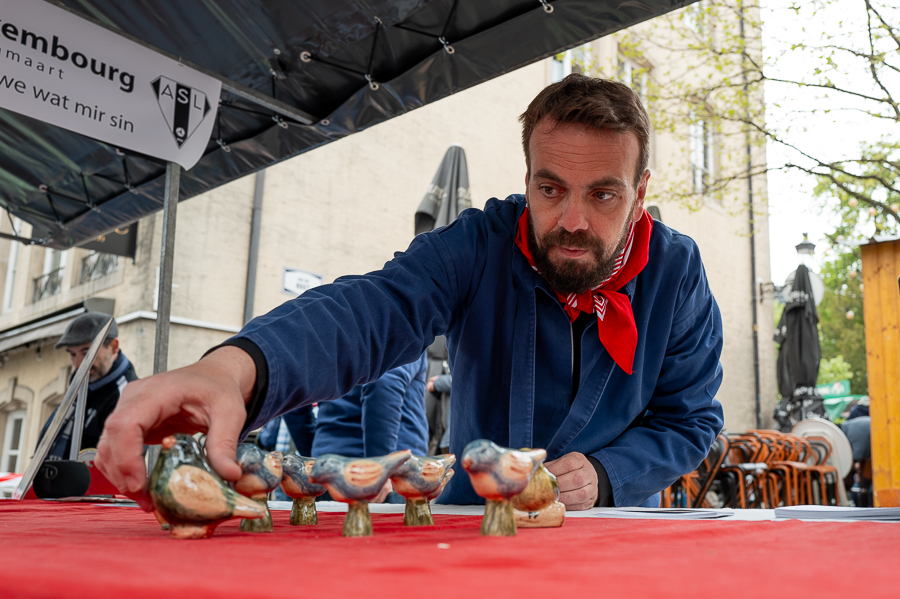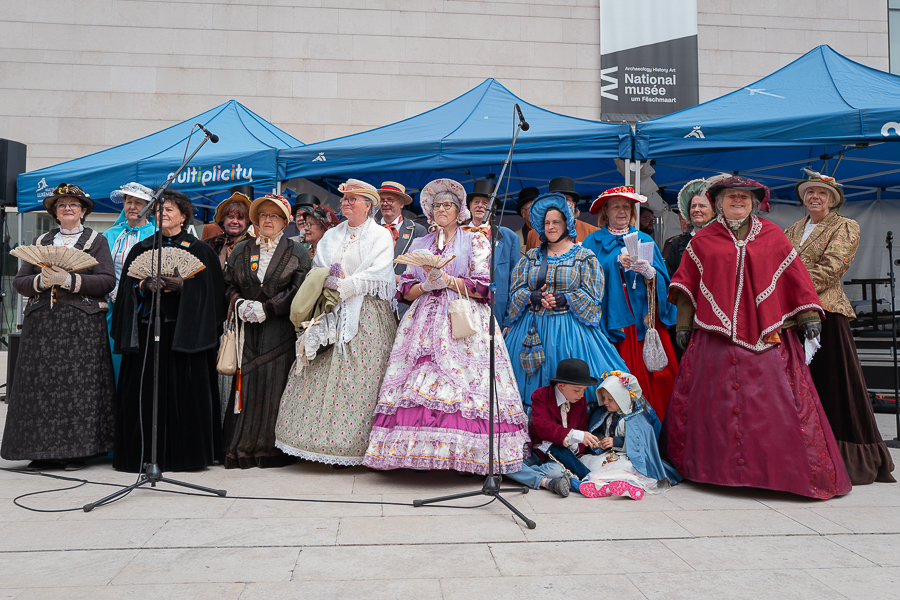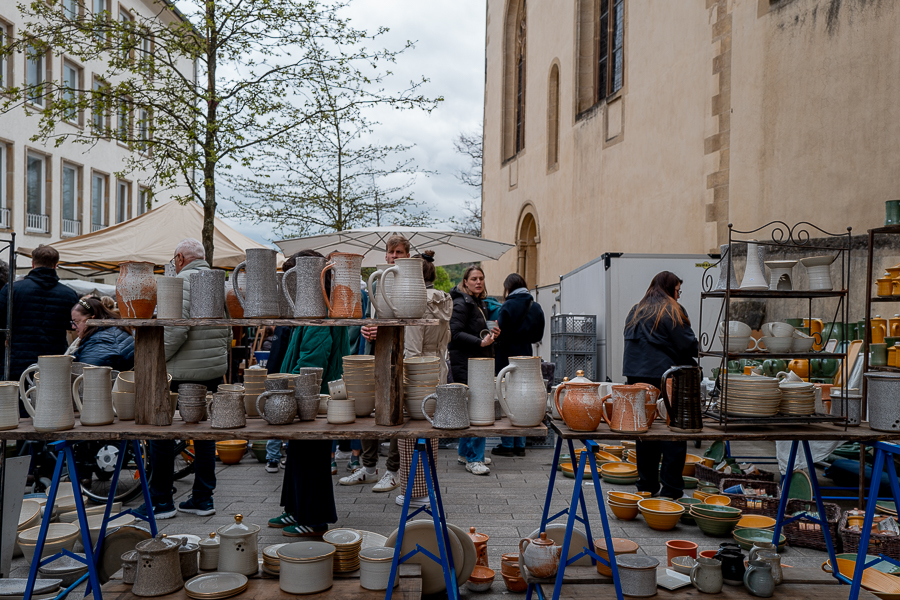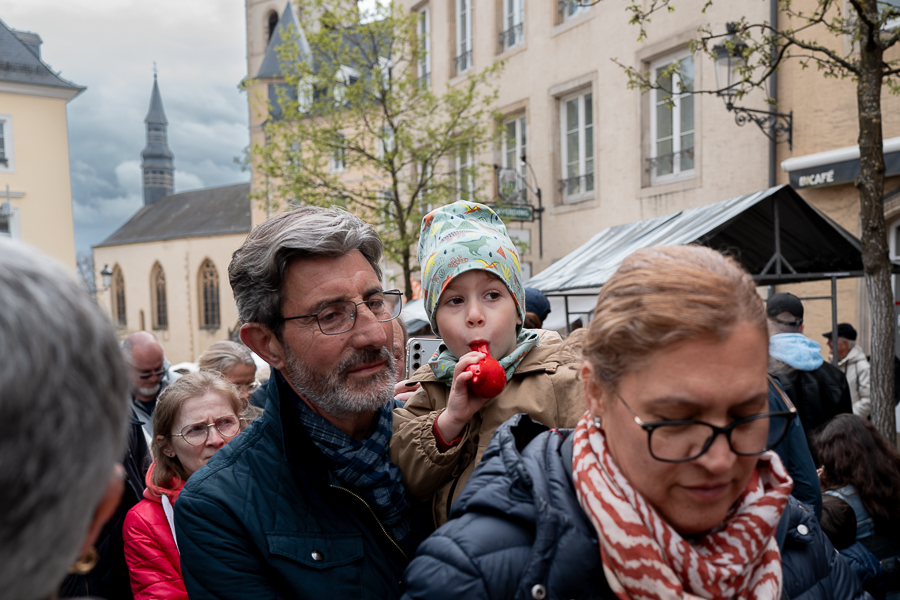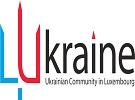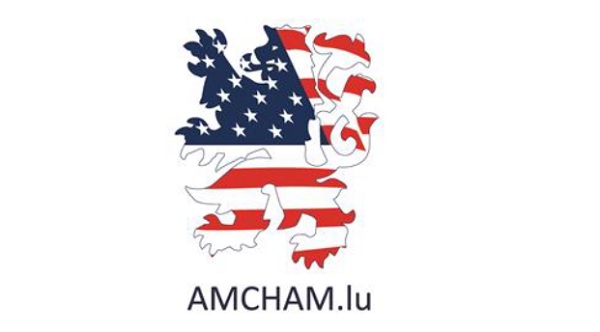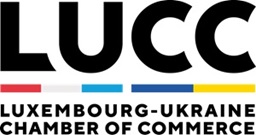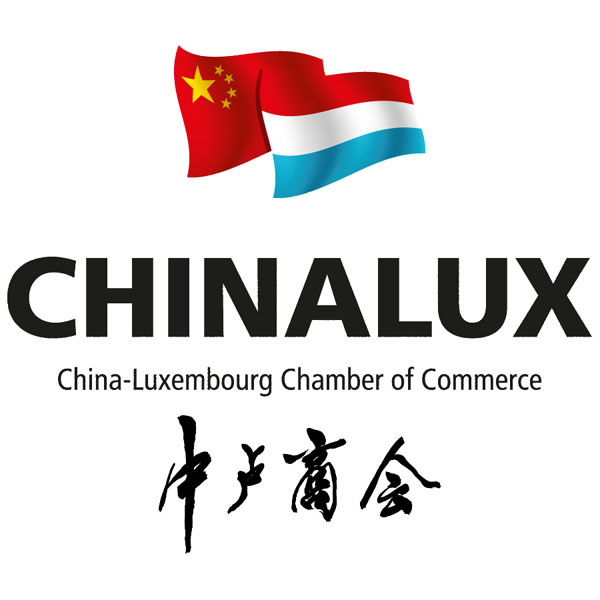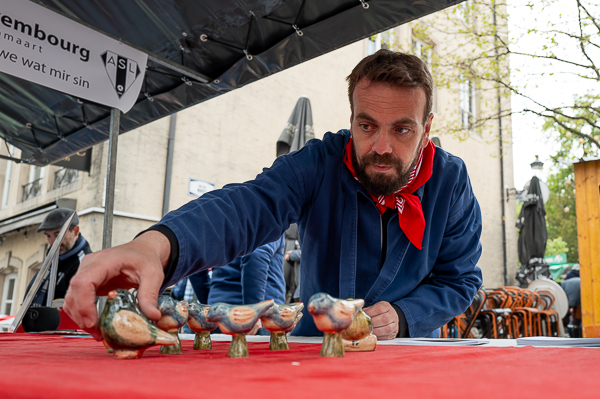 Éimaischen 2025;
Credit: Ali Sahib, Chronicle.lu
Éimaischen 2025;
Credit: Ali Sahib, Chronicle.lu
On 21 April 2025, Easter Monday, thousands of people attended the annual Emaischen (Easter market) that took place in Luxembourg city centre’s old quarter.
Organised by the Events, Festivals and Markets Department of the City of Luxembourg in partnership with the Alstad Committee, the capital’s Emaischen event was spread across the Fish Market, Rue du Marché-aux-Herbes, Rue de l'Eau, Rue de la Reine, Rue de la Boucherie, Rue du Rost and Rue Sigefroi.
Records show that the festival dates back to at least 1827. Potters are believed to have attended mass on Easter Monday in St Michael’s Church in the old fish market area of the city and sold their ceramics, including hand painted birds, following the mass. The market has since evolved into one of the Grand Duchy’s most colourful and popular festivals.
Easter Monday 2025 may have been overcast and not too warm, but that did not deter the large crowd, from the very young to the not so young, from attending the 196th Emaischen festivities. The old quarter was bustling with activity as people visited and admired the many stalls featuring pottery and ceramics, from Luxembourg and beyond, as well as stalls showcasing vintage items, hats, jewellery, household goods, woven baskets, toys and much more. The main attraction, however, as the vast array of “Péckvillercher” - the uniquely decorated ceramic bird whistles, in many shapes, sizes and colours, traditionally exchanged between lovers and only sold in Luxembourg on Easter Monday each year. The different whistle sounds, said to imitate the sound of the cuckoo calling, were heard throughout the city centre as excited children, as well as some whose childhood days are long gone, tried out their newly acquired clay bird.
As is the case each year, collectors were up early to ensure the purchase of the péckvillercher exclusive to 2025.
In addition, food and drink stalls served crepes, churros, waffles, ice cream, as well as sausages, burgers, chips and more. There was face painting and activities for children and folk groups provided singing, dancing and musical entertainment in front of the National Museum of Archaeology, History and Art (MNAHA; Nationalmusée um Fëschmaart).
Emaischen celebrations also took place throughout Easter weekend in the village of Nospelt in the south of the country.

